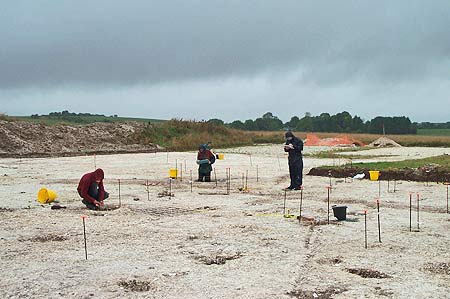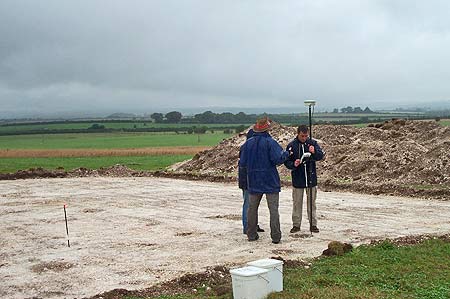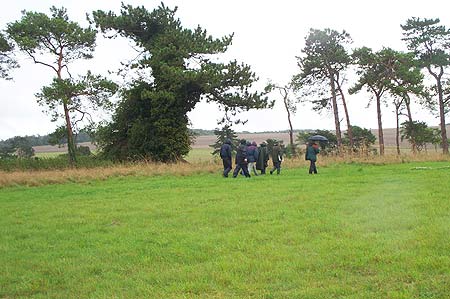It was the last day on site for the Southampton University students and in fact the last day of the three week training excavation and the weather marked this important occasion by absolutely hammering it down with rain for much of the day. Undeterred, the students braved the precipitation and carried on excavating and recording. Fortunately the chalk drains fairly well and the site remained relatively dry, and it is amazing how well 6H pencils work on Permatrace even when it’s very wet.

We were joined on site today by Tom Goskar and Doug Murphy, both from Wessex Archaeology. Tom is our Multimedia Developer and came out to record a Podcast, interviewing various team members as well as Martin Green.

Doug is our Survey Officer and he carried on mapping the site and training two of the students in GPS. We are hoping that all the various post-holes that have been mapped will finally make some sort of coherent structural pattern. There are so many on site (over 150) that they could be joined together in a plan to make roundhouses or rectangular houses as well! Hopefully the post-excavation work will be able to provide some further light on the number, shape and type of structures present.

We took a slightly early lunch in light of the rather inclement conditions and the rain got even heavier. All of the students donned their waterproof trousers and jackets and umbrellas and joined Martin for the long tour of the rich archaeological landscape around Down Farm.

Just as they began the walk the clouds parted and the sun started to shine, which made for a much more pleasant ramble across the countryside, as well as a more auspicious ending to the training excavation.
We would like to thank everyone who has been involved in the excavations at Down Farm this year. All of the 35 students who have taken part, as well as all the Wessex and non-Wessex specialists who have given tutorials and workshops, have contributed to making this project a success. We hope that all the students have learnt valuable field skills and have gained confidence and enthusiasm to continue in archaeological excavations. Finally our special thanks to Martin Green without whom this project would not be possible.